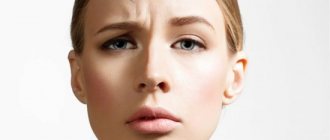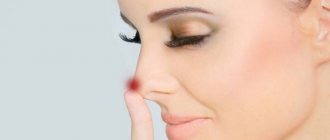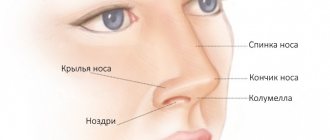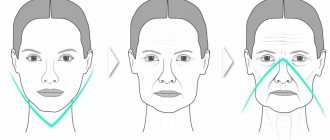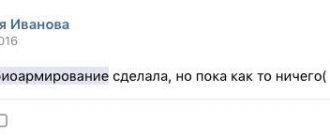Rhinoplasty with threads is a modern technique aimed at correcting the nose without surgery. When compared with surgery, the procedure is characterized by a low level of tissue damage, and the rehabilitation period also takes much less time.
Rhinoplasty with threads allows you to get rid of a number of aesthetic problems: it will help narrow the wings of the nose, slightly straighten its back, and raise the tip.
However, the technique does not help to straighten the nasal septum when it is deviated, nor will it help improve breathing. At the same time, there is increased interest in the technique, but is it so effective and promising?
In fact, the use of threads is a rare case
Threads are rarely used to correct imperfections in the nose area, the reason is that the basis of correction with threads is “stretching”, tightening of soft tissues. It is not always possible to “tighten” your nose organically. Using this method, it is possible to achieve some leveling, a slight shortening of the length of the nose, but it will not work to correct a hump or fill in an unevenness (a sunken nose). But it is possible to raise the tip of the nose, as well as implement changes in the columella area within 105–110 degrees. This is enough for visual rejuvenation of the facial area.
At the same time, lifting with threads must be treated with caution; there remains a risk of undesirable consequences after the procedure.
Main types of Aptos threads
Implants with a fibrous structure are made from polymer materials of different thicknesses and compositions, which determine their lifespan. High-quality Aptos products contain natural ingredients that slow down the aging of the epidermal layer.
To choose a specific brand, a cosmetologist (doctor) takes into account the indications and the expected result, not forgetting about contraindications.
Aptos implantable material is available in two main types:
- Absorbable threads. Cosmetic products are made from caprolact fiber with the addition of a certain percentage of L-lactic acid. The release of its microdoses into the skin tissue stimulates the production of new collagen (its own), which becomes the key to skin rejuvenation. The introduction of bioimplants is suitable for patients of any age.
- The threads are non-absorbable. The surgical type of material is created on the basis of polypropylene, used in medicine for postoperative stitching of incisions. This type of implant is administered to patients over 45 years of age to ensure a permanent reinforcing effect. However, performing anti-aging procedures in the future will become impossible.
Correction of the surface of the nose or its tip is performed with absorbable Aptos threads; it is not recommended to use non-absorbable material. Such threads will forever remain in the thin structure of the subcutaneous layer and will be noticeable, which over time can significantly worsen the aesthetics of the face.
The difference between the main types of threads is due to the characteristics of the material used. To produce absorbable products, organic polymers based on polylactic acid are used.
Interacting with skin enzymes and water, the organic composition undergoes biodegradation (decay) over time (1-3 years). Non-absorbable threads are made from non-degradable varieties of a polymer substance that does not react with enzymes and does not disintegrate.
In addition to the main types, Aptos threads are combined. In this case, the inner part of the product is made from components that cannot be degraded (polypropylene master alloy).
The external component of biodegradable material (polymilk cones) undergoes gradual breakdown over the course of a year and is subsequently eliminated from the body. Combined type implants are recommended for women with a high risk of contouring (very thin skin).
Nose correction with threads, the essence of the method
It cannot be said that thread lifting can replace rhinoplasty completely; this is not true. During the procedure, a slight change in the configuration and length of the nose is made, for which the soft tissues are tightened. In appearance, this looks like a shift in relation to the previously occupied position, as well as a decrease in volume. There are special notches on the threads, with their help the fixation becomes stronger, this is reflected in the extension of the shelf life of the results of the procedure.
Thread correction, what effects are amenable to the technique?
The technique allows you to correct only minor defects and slightly improve the appearance. Can be used for the following problems:
- large nostril size;
- elongated and drooping tip of the nose;
- unevenness of the bridge of the nose.
It is possible to correct the nose without surgical correction; threads are useful for slight shortening, creating an upturned tip of the nose - this makes the overall appearance more perky. Threadlifting is intended to narrow the base if it is excessively wide, to relieve patients of the wings that blur when smiling, to highlight and create a more attractive back.
Contraindications
Like any procedure, non-surgical rhinoplasty has a number of contraindications. You must notify your doctor of any diseases, allergic reactions, or malaise. So, contraindications to non-surgical rhinoplasty:
- period of pregnancy and lactation;
- increased tissue bleeding;
- the presence of acute inflammatory processes in the body;
- elevated temperature, fever;
- infectious diseases;
- herpes (active form);
- decompensated form of diabetes mellitus;
- allergy to the drug used or its components.
Positive and negative aspects of the technique
The thread technique for correcting nasal defects is a minimally invasive operation with a short recovery period. Due to this, it has few contraindications and the risk of side effects is low. Despite the wide list of advantages, most specialists (both cosmetologists and surgeons) perceive the use of threads with skepticism, the reason being its low effectiveness.
With the help of plastic surgery, only aesthetic defects are corrected; patients who experience problems with nasal breathing or suffer from an incorrect position of the septum in the nose should not hope to benefit from the correction.
Correcting the shape of the tip of the nose and lifting it using self-absorbable threads are short-lived, the achieved result begins to disappear after 6-8 months. The lifting of the back and wings of the nose lasts a little longer.
Anatomy of the zone: what features need to be taken into account
The outer part of the nose has a pyramidal shape. The root of the nose is located above, and its rounded tip is located below. Between the base and the tip is the bridge of the nose. The nostrils are pear-shaped openings leading into the vestibule of the nasal cavity, delimited medially by the nasal septum, and laterally by the wings of the nose.
Follow us on Instagram!
The skeleton of the external part of the nose consists of cartilaginous and bony components. The bone component is located above and is formed by the frontal, nasal and maxillary bones. The inferior cartilage consists of one septal cartilage, two lateral cartilages, two alar cartilages, and smaller alar cartilages. While the skin over the insidious part of the nose is thin, in the cartilaginous part it is thicker and contains sebaceous glands.
Rice. 1: outer part of the nose
Carrying out the procedure
Nose correction with threads is performed by a cosmetologist within an equipped medical office. Local anesthesia is sufficient for pain relief. Dermafil Happy Lift, APTOS or others threads can be used. They are inserted, creating micropunctures. The installation area can be the tip of the nose or the area of the wings. Next, the doctor adjusts the form to the desired effect, the result can be assessed no earlier than 2-3 days after the procedure. The changes are noticeable immediately, but at first there is swelling.
Features of the procedure
The thread technique for the nose is no different from the classic thread lifting. The surface of the skin is treated to remove dirt and cosmetics, and an antiseptic composition is used. To eliminate pain, local anesthesia is used.
The implantation process includes the following steps:
- Marking of selected zones.
- Inserting a cannula with a thread under the skin and moving it along the intended line. A small “anchor” is provided at the second end to allow fixation.
- The thread brought out is pulled in the opposite direction, causing displacement of the soft tissues.
- The excess thread is cut off and hidden under the skin.
During the technique, each structure requires two punctures. Their healing occurs quickly, leaving no scars or scars.
Recovery period
Changes are noted immediately, but the final result should be expected no earlier than after 3 days. This period allows the threads to move into the desired position, and tissue swelling also goes away. During this period, it is important to avoid active facial expressions, and physical impact on the installation area should be minimized.
Prohibited:
- use cosmetics;
- touch your nose with your hands;
- wet the location area;
- use creams, lotions, scrubs, masks.
Avoid physical activity that will lead to a rush of blood to the facial area for 3-5 days. During the designated period, a framework of connective tissues will be created near the threads, and they themselves will be installed correctly. Hematomas and swelling can be eliminated using cooled compresses, as well as compositions with absorbable qualities: heparin ointment, Troxevasin, Traumeel.
What is thread rhinoplasty
Rhinoplasty with threads is a non-surgical technique for correcting the shape of the nose, which uses special fibers. They form the frame, which allows you to correct such shortcomings as narrow wings of the nose, drooping tip and others.
After the threads are implanted, dense connective tissue forms around them. Over time, the fibers dissolve. At the same time, the shape of the nose does not change for several years. Thus, it is possible to correct minor appearance defects without resorting to surgery. There are no scars or scars left after the procedure.
From an expert
Vyunova Anastasia Igorevna
Doctor of the highest category, CMN
Find out more
The best solution for correcting the shape of the nose without surgery is RhinoCorrect. This orthopedic splint is an alternative to rhinoplasty. The cartilaginous tissue of the nose is subject to deformation gradually by 1-2 mm per month. To achieve visible results, wear the RinoCorrect clip 3-4 times a week in the evening for 2 hours. You can familiarize yourself with the methodology by clicking the “Find out more” button.
Result
Nose correction with Aptos threads does not have a stressful effect on the body. The result obtained can cause admiration, and you can see it immediately after the completion of the plastic surgery. After 3-5 years, the reinforcing biomaterial will be removed from the body, and the tightening will have to be repeated.
Result of nose correction using Aptos threads
Taking into account patient reviews, Aptos Excellence Visage absorbable threads are recognized as the most effective material for thread reinforcement of soft and thin facial tissues.
A modernly developed suture product (2013) is equipped with multidirectional teeth, which promotes uniform tension of tissue structures and reliable fastening of biothreads. The cost of a package with 10 units ranges from 32-52 thousand rubles (depending on the length).
Possible complications
Proper implementation of lifting with Aptos material, taking into account contraindications and correct behavior of patients during the short recovery period reduce the risk of unpleasant consequences.
However, in some cases, the appearance of unforeseen reactions (purely individual) cannot be ruled out:
- development of a purulent process with the formation of fistulas along the ligature;
- scarring of soft tissues (scars), overtension of the reinforced frame;
- the appearance of nasal asymmetry, absence of planned changes.
In rare cases, the skin on the face may lose sensitivity or become covered with age spots. Quite rare complications include the appearance of hemorrhages and painful lumps that transform into aseptic cysts.
The cause of complications is associated with improper implementation of ligature lifting, poor quality of the material used, but mainly with the patient’s failure to comply with the rules of rehabilitation measures.
Progress of the operation
Regardless of the choice of material, cosmetic lifting with Aptos biothreads requires simple preparatory measures:
- at a preliminary consultation with a cosmetic surgeon, you need to select the optimal correction method, taking into account contraindications;
- the patient must undergo an examination with tests, consult with specialists of a narrow profile;
- After computer modeling of the final result, the doctor will explain how non-surgical rhinoplasty will proceed.
Two weeks before thread correction, you need to stop taking medications that reduce blood clotting and stop using hormonal contraception. It is better not to go to the sauna or solarium, and 2 days before the procedure they are completely prohibited, just like alcoholic drinks and cigarettes.
A minimally invasive procedure in a beauty salon or clinic is performed according to the following program:
- After treating the surgical field with an antiseptic, the surgeon makes markings. Dots mark the puncture sites, lines indicate the directions for pulling the threads.
- The patient then receives the prearranged anesthesia. This may be the introduction of an anesthetic or an anesthetic injection along with a superficial application.
- Next, punctures are made along the marks made, and a thread is inserted through them using a cannula. Its fixation is carried out by a small “anchor” at the inserted end.
- Using the free end of the thread, the doctor models the desired shape by displacing the soft tissue. Having obtained the desired result, the thread is secured and its ends are cut.
A thread rejuvenation session lasts only 40-60 minutes. According to patient reviews, manipulation allows you to quickly get rid of age-related sagging skin on the face. Due to the absence of a long recovery period, it becomes possible to combine threadplasty with other minimally invasive correction techniques.
Rehabilitation period
Recovery after thread nose correction takes no more than 5-7 days. At this time, the patient may experience pain at the puncture site and discomfort along the thread lines. There is also some swelling on the face, traces of bruising appear, which should not be alarmed.
To relieve pain, you can use analgesics; swelling is relieved with antihistamines and heparin ointment. Thanks to the regeneration process, damaged skin will recover, but you will have to watch your own facial expressions.
During the recovery period, it is also necessary to pay attention to nutrition, avoid hot drinks, alcohol, active physical activity and sun exposure. In addition, you should not exfoliate, use scrubs, or visit the sauna.
